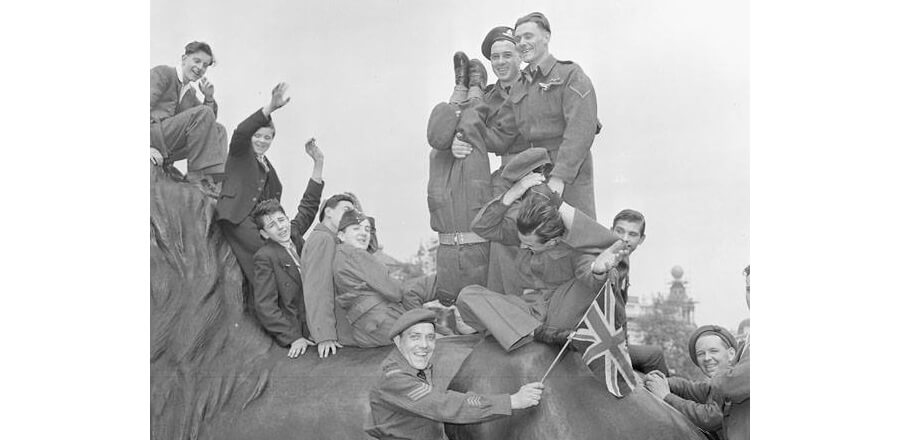
V-E Day (Ross Munro’s Bet)
On April 3, 1945, thirteen Canadian war correspondents met in 1st Canadian Army Headquarters to try to predict when the war would end. They agreed that the individual whose guess was closest to the actual day would win an engraved portable typewriter. The selected dates ranged between 25 April and 1 August, some of which were randomly chosen by the laughing journalists. However, one of them was more exact; Canadian Press correspondent Ross Munro had a hunch that the lucky day would be May 8, his second wedding anniversary.
London officially declared May 8, 1945 as Victory in Europe Day, giving Munro the win, but when asked about his correct instinct, Munro vehemently denied that personal sentiment motivated his guess. The correspondent, who had covered almost every major Canadian action in the Second World War, said that his estimation was based on his reporting of major operations, such as the Dieppe invasion, D-Day, Operation Husky, and the Rhineland campaign.
V-E Day was declared a national holiday in Canada and people took to the streets to celebrate the end of the fighting in Europe. Toronto spent $18,657 on its victory celebrations and people were eager for the forthcoming return of Canada’s citizen soldiers. While the hostilities in the Pacific meant that the Second World War was still far from over, the Canadian government promised that all Canadian troops stationed in Holland and Germany would be home by Christmas, except for the occupational force.
Main photo: V-E Day celebrations, Trafalgar Square, London, England, 8 May 1945. (Credit: Lieut. Arthur L. Cole / Canada. Dept. of National Defence / Library and Archives Canada / PA-177086)

